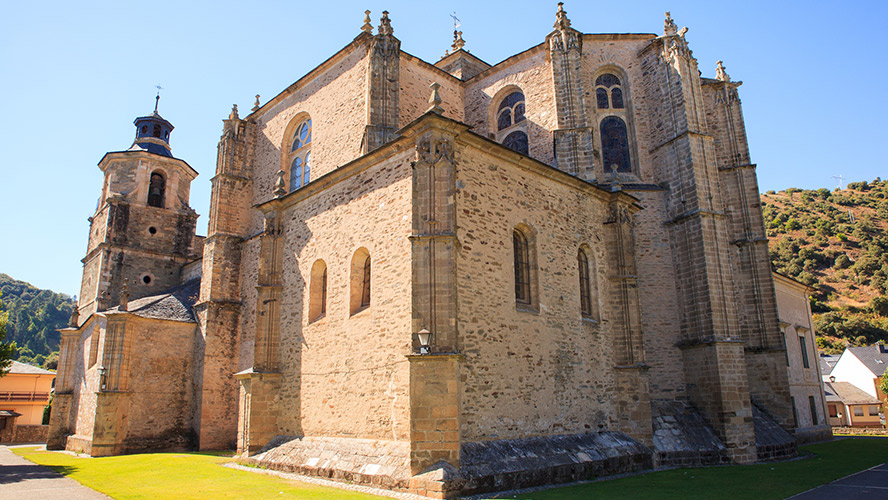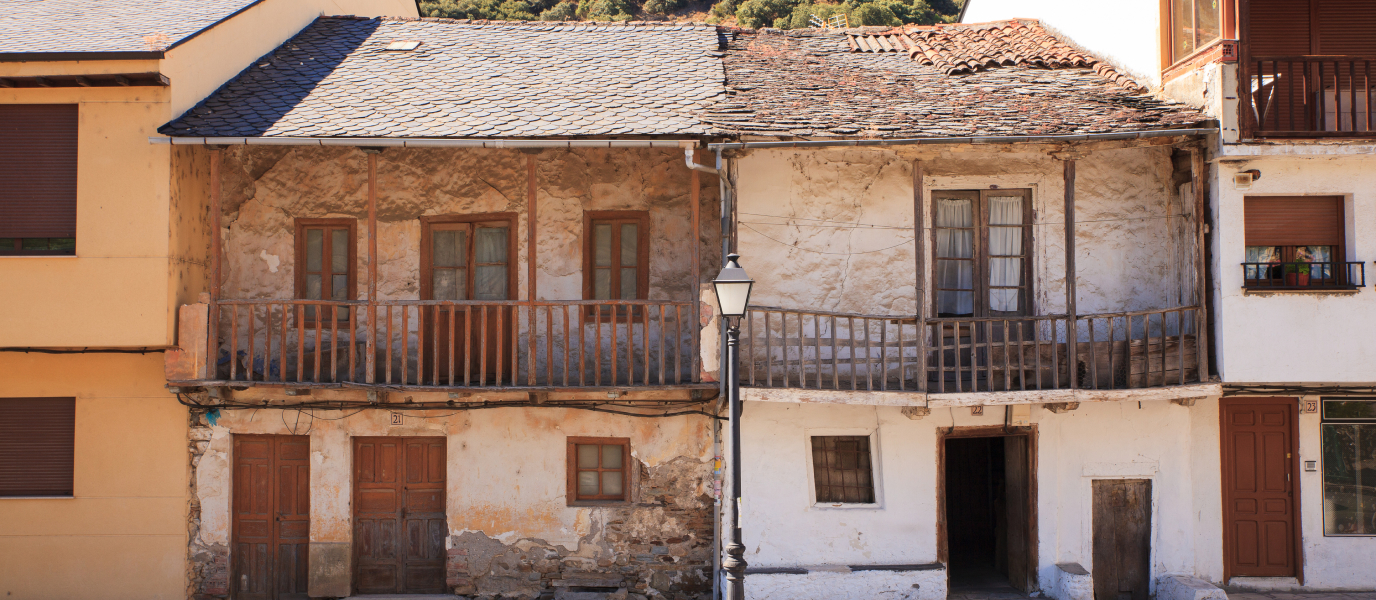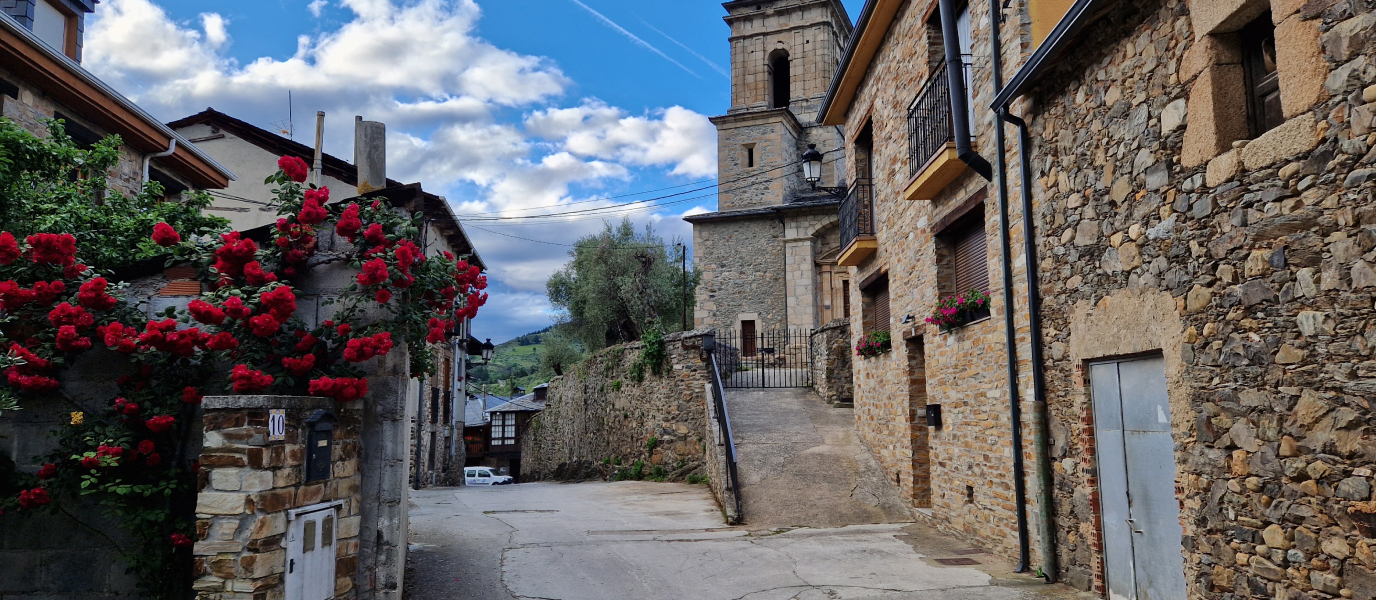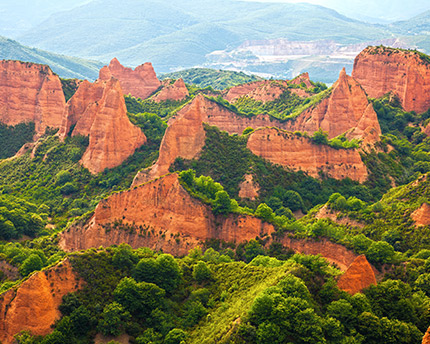Ponferrada, like other places in the comarca of El Bierzo, owes its development to the surge in popularity of the Camino de Santiago [Way of St. James]. In fact, the name of this city derives from the bridge “Pons-Ferrata” built across the river Sil in order that the pilgrims could continue on their way. From the twelfth century onwards, many Knights Templar arrived in the area to guarantee the safety of the faithful as they walked to Santiago de Compostela. And King Alfonso IX eventually granted the city to the Order of the Knights Templar.
This is a guide to the star attractions that you will not want to miss in Ponferrada.
Castle of the Knights Templar
Ponferrada’s outstanding attraction is the Castle of the Knights Templar. Built in the twelfth century, with the arrival of the Order of the Knights Templar to protect the pilgrims on the Camino de Santiago, an event surrounded by legends.
Despite its outward appearance, the castle has been subject to many restoration projects, with the result that it looks very well preserved: it still has its walls, eight towers and the area known as the New Palace.
Inside, the highlights are the permanent Templum Libri exhibition, where visitors can see invaluable codices and manuscripts, as well as the Torre de Moclín exhibition, which explains much about the lives of knights and castles in the Middle Ages.
True fans of the Knights Templar will not want to miss Noche Templaria [Templar Night] which is held in the castle on the night of the first full moon of the summer.
Plaza del Ayuntamiento
The Plaza del Ayuntamiento [Town Hall Square] is very close to the Clock Tower, and is the perfect place to take a break, have a drink and enjoy the city’s atmosphere on one of the terraces close to the square’s pillars.
The square’s outstanding feature is the Town Hall building, built in the seventeenth-century, with its two unmistakeable towers at the sides.
This square is the central hub of life in Ponferrada, since from here lead several streets that are home to some of the city’s most attractive spots.
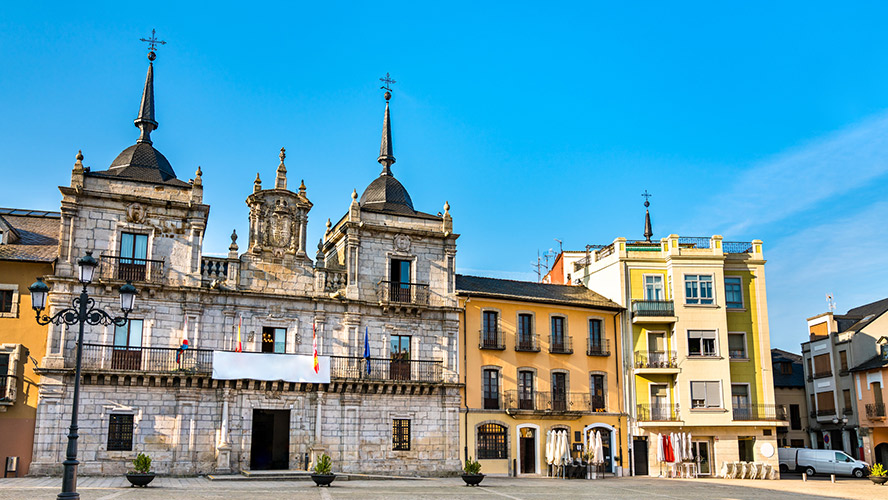
Church of St. Andrés
The Church de San Andrés stands in the old quarter de Ponferrada, right opposite the Templar Castle. Although the present church is a Baroque building, it was built on the site of another, older, medieval church.
This church has a direct link with the Order of the Knights Templar, and not only because of its proximity to the castle. At San Andrés, the Cristo de la Fortaleza [Christ of Strength] and the Cristo de las Maravillas [Christ of Wonders] was venerated, and inside the tower, visitors can still see two stone Tau crosses, the symbols of Ponferrada’s Knights Templar.
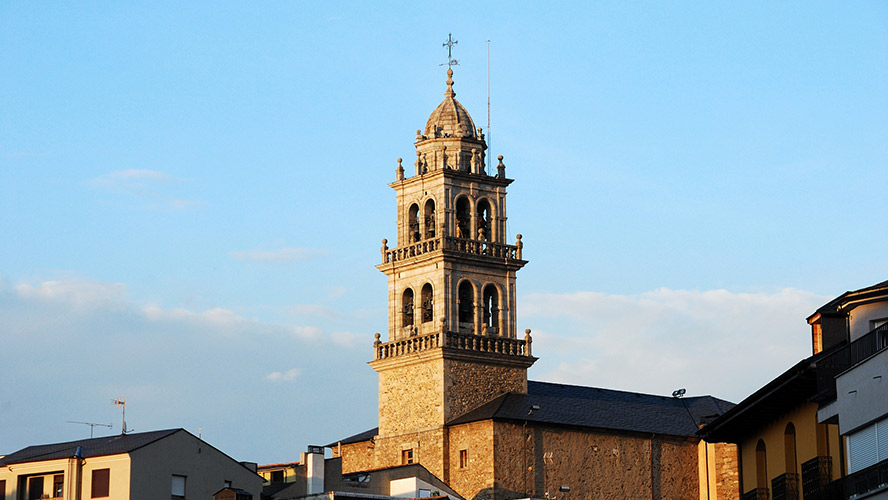
The Clock Tower
The Clock Tower [Torre del Reloj, in Spanish] is one of the city’s emblems, and is a must-see monument on our tour. It is the only one of five entrances in Ponferrada’s medieval walls that is still standing. This sixteenth-century tower rises right above the so-called Arco de las Eras [Arch of Ages]. When the first two Renaissance-style sections of the tower were built, a huge imperial shield of Felipe II was placed alongside the city’s own shield. The nineteenth century saw the addition of the clock that has given the tower, and the street in which it stands, their names. The final section was built in the seventeenth century, and houses the popular bell.
Museum of Energy
This museum occupies what was once the thermal power station of the Ponferrada Steel Plant (the MSP), which continued in operation until 1971. It was one of the city’s main companies, and key to its development. Since the museum opened in 2011, it has become the ideal place to learn about how electricity was produced from carbon, and how people lived, worked and spent their leisure time during those years. In spite of what many people might think, it is a most enjoyable and educational visit for the whole family.
Railway Museum
The railway station between Villablino and Ponferrada has now been converted into the Railway Museum. It exhibits old drivers’ and conductors’ uniforms, as well as restored steam locomotives which of course ran on coal.
It is worth noting that back then, there existed a line with only two stops: Villablino and Ponferrada. However, this infrastructure was created simply for the purpose of transporting coal from the mining areas key to the development of León to the nearby power stations.
Until 1980, this line continued to transport raw materials and passengers on tracks used by the last working steam locomotives in Spain.
Museum of Radio
‘What is a Museum of Radio doing in the middle of Ponferrada?’, you may well ask. The answer is that Luis de Olmo, a broadcaster who influenced the development of this form of communication in Spain, was born in this area. The museum houses over 300 old devices, and tells the story of radio and its various uses, both for the dissemination of information and for propaganda purposes. During the tour, visitors can listen to landmark historic Spanish radio broadcasts.
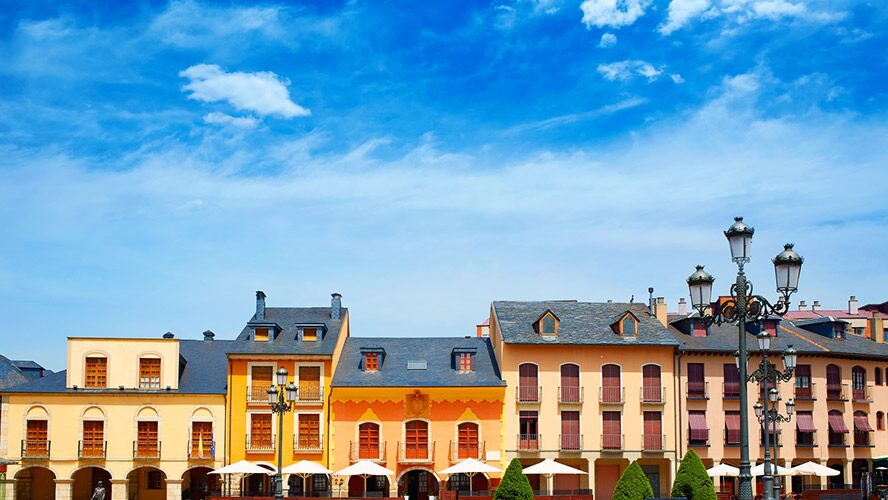
Where to eat in Ponferrada
A good way of sampling Ponferrada’s hearty cuisine is to take a seat at one of the terraces in the Plaza del Ayuntamiento, where you can also enjoy one of the area’s excellent wines. If you’re looking for something more special, you could book a table at either La Bodega de Godiva or Restaurante Muna (which offers a tasting menu).
Not a bad choice either are the establishments that offer a set menu, such as Mencía or 7 Sillas, both in the same square.
What to see in the surrounding area
Very few people connect Ponferrada with the river Sil. However, the city has a strong relationship with this aquifer, which is famous as one of Galicia’s major rivers. One fun activity is to walk one of the hiking trails in the riverside area.
If you’d prefer more historical visits, Astorga is very close to Ponferrada, as are some of El Bierzo’s most attractive towns, such as Peñalba de Santiago and Villafranca.
Also close by is the natural monument of Las Médulas, designated a World Heritage Site in 1997, which has a variety of fantastic caves, paths and viewing points to help you appreciate the scenery typical of this area.
One amazing excursion is to Herrería de Compludo, a medieval forge located a 30-minute car drive from Ponferrada. It is in this area where Spain’s earliest monastery was founded during the time of the Visigoths.
